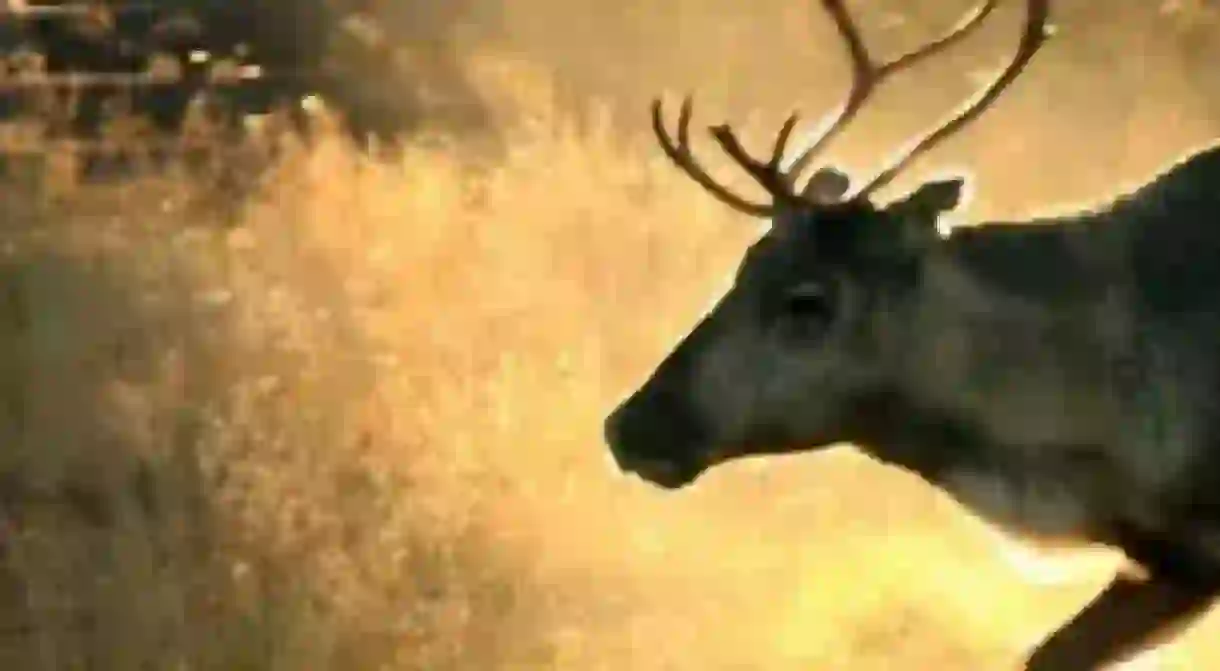Aatsinki: The Story Of Arctic Cowboys: Documenting The Finnish Arctic

Director Jessica Oreck’s latest documentary Aatsinki: The Story of Arctic Cowboys (2013), shown as part of the BFI London Film Festival 2013, is a fascinating look into life in Finland’s Lapland. Rebecca Chan reviews this enlightening documentary, investigating its distinct approach to the freezing climate and its unique portrayal of modernity.
‘With Aatsinki’, director Jessica Oreck ponders, ‘I hope to make sub-zero weather, 24-hour nights, and an intense bond with nature feel real to someone who has always had a thermostat and known the glow of electricity’.
Aatsinki: The Story of Arctic Cowboys is a quiet, subtle film in which the weather, the landscape and the rhythm of daily life guide the story. In the film director Jessica Oreck herself is notably silent. She relies on crystal-clear sounds and sharp visuals to convey the climate: the crunch of snow, or the crackle of sausages roasting over fires, sending sparks shooting off into the darkness. The film is comfortable and homely, despite the inhospitable weather, made so by the warm orange glow of the family home, the playfulness of the children and the boiling of endless pots of what must surely be the strongest coffee ever caught on camera.
In some ways, Aatsinki is a classic ethnographic film. The Aatsinki family are filmed, quietly, without any acknowledgement of the camera or the woman behind it. They are filmed hunting and gathering – that is, catching fish and picking mushrooms. True to form, the opening scene is a headfirst propulsion into the visceral reality of animal butchery. In contrast to this striking opening, the film in its entirety is much more subtle and nuanced.
For a start, while the lingering shots of winter wonderland scenery are offered liberally, there is no element of undue romanticism here. The Aatsinki family are not presented as a clan of noble savages, an out-dated and endangered kind preserved only through Oreck’s generous filmmaking. Instead, Oreck offers a view of their particular brand of modernity. The simple beauty of roasting a fish over a fire is complemented by the technological brilliance of treating a toddler to a snowmobile ride. At one moment the children sit on a fence, watching their parents castrate reindeer. The next moment, they are unwrapping the latest games consoles (delivered, thrillingly, by a man in a Santa suit arriving by actual reindeer). The Aatsinki family rely on both the land and technology in order to survive, in a way that we all do. It is their isolation and the directness of their reliance that makes them uniquely apt for exploring this fine balance between nature and technology. In dealing with this issue of modernity in the wilderness, Oreck’s lack of wistfulness, endemic to so much of ethnographic film, makes Aatsinki all the more refreshing and enjoyable.
Oreck’s filmmaking exudes an apparent kindness. She describes the film herself as ‘part rugged cowboy adventure, part environmental study, and 100% a love letter to this family’s way of life’. Somewhere in between the understated, the film depicts shots of Arctic beauty as well as the intimate, everyday moments of familial closeness, and through this true fondness shows.













